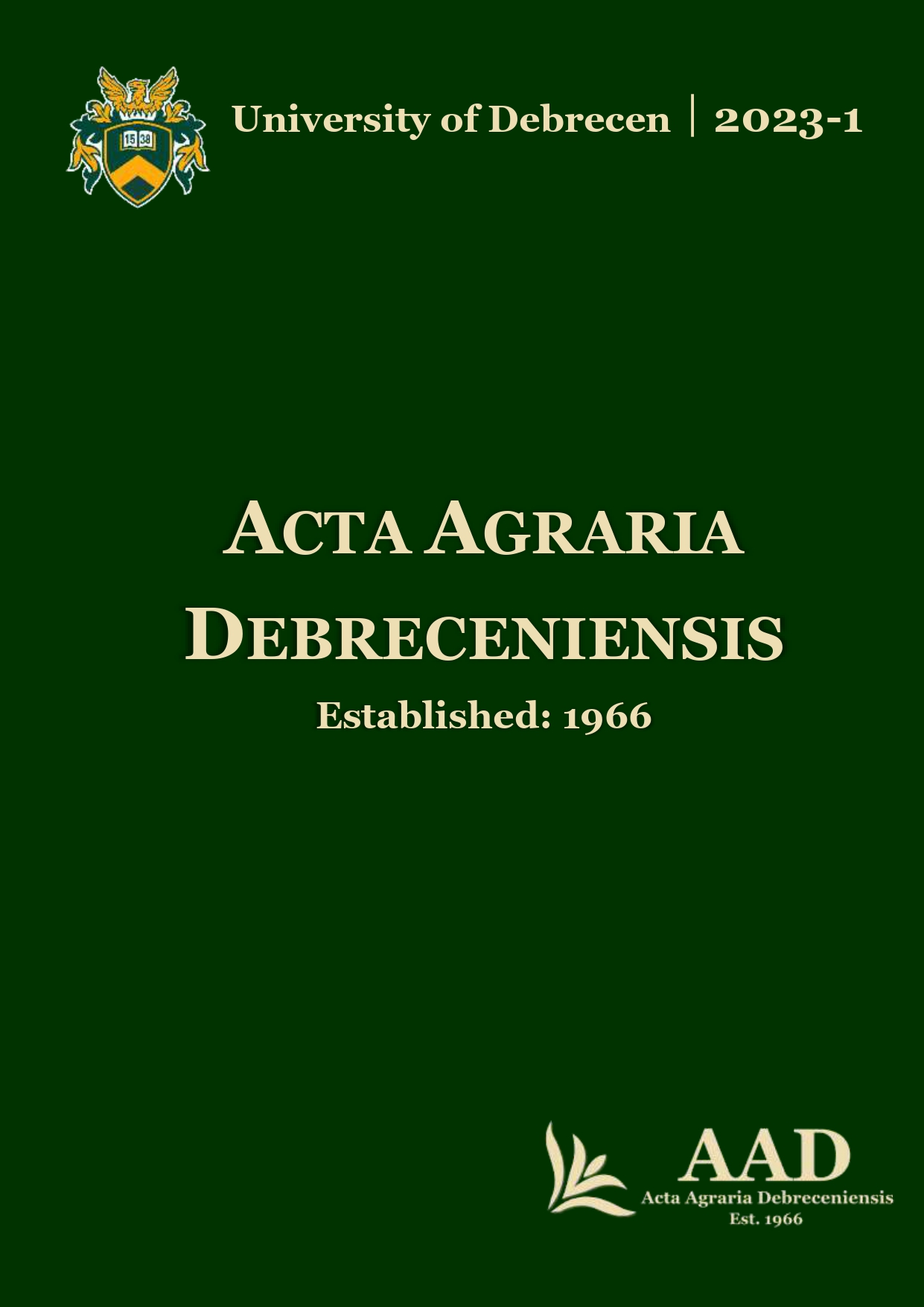Effect of harvesting time on the vitamin C content and yield of chili pepper
Authors
View
Keywords
License
Copyright (c) 2023 by the Author(s)

This work is licensed under a Creative Commons Attribution 4.0 International License.
How To Cite
Accepted 2023-05-15
Published 2023-06-05
Abstract
For thousands of years, chili pepper has been used in cooking intensifying the aroma, colouring, and even flavouring with its pungency. Today ,it is also of interest for the various food and pharmaceutical industries due to its intrinsic characteristics. These characteristics of pepper and its yield can be affected by both the variety and the temperature fluctuation throughout the harvest period. The current work's objective was to investigate the effect of harvest time on vitamin C of different varieties of chili pepper C. frutescens and C. annuum cultivated in Hungary, as well as the yield of pepper in different harvesting periods. Vitamin C was determined by HPLC protocols. The differences between harvest times and varieties were analysed using Tukey post hoc test at 5%. All varieties showed fluctuation of vitamin C level, depending on the given harvest date. At the last harvest, all varieties had higher vitamin C content. All varieties had the same yield trend throughout the year but with different yields between each. Variety Hetényi Parázs had the highest vitamin C content and yield: 3720.53 µg g-1 vitamin C and 18.63 t ha-1 average yield, respectively.
References
- Baenas, N.–Belović, M.–Ilic, N.–Moreno, D.A.–García-Viguera, C. (2019): Industrial use of pepper (Capsicum annum L.) derived products: Technological benefits and biological advantages. Food chemistry, 274, 872–885. DOI: https://doi.org/10.1016/j.foodchem.2018.09.047
- EFSA ANS Panel (2015): Re-evaluation of paprika extract (E 160c) as a food additive. EFSA Journal 13(12), 4320. DOI: 10.2903/j.efsa.2015.4320
- FDA. (2017): Cosmetic Ingredients. FDA database. Food and Drug Administration U.S. URL: https://www.fda.gov/Cosmetics/ProductsIngredients/Ingredients/default.htm; Accessed: 14 May 2020
- Gnayfeed, M.H.–Daood, H.G.–Biacs, P.A.–Alcaraz, C.F. (2001): Content of bioactive compounds in pungent spice red pepper (paprika) as affected by ripening and genotype. Journal of the Science of Food and Agriculture, 81(15), 1580–1585. DOI: 10.1002/jsfa.982
- Gunawardena, M.D.M.–De Silva, C.S. (2014): Identifying the impact of temperature and water stress on growth and yield parameters of chilli (Capsicum annuum L). OUSL Journal 7: 25–42. DOI: http://doi.org/10.4038/ouslj.v7i0.7306
- Kumar, O.A.–Tata, S.S. (2009). Ascorbic acid contents in chili peppers (Capsicum L.). Notulae Scientia Biologicae, 1(1), 50–52. DOI: https://doi.org/10.15835/nsb113445
- Mastrangelo, D.–Massai, L.–Fioritoni, G.–Coco, F.–L. (2017): Vitamin C against cancer. In: Hamza, A.H. Vitamin C, IntechOpen, DOI: 10.5772/intechopen.68746. URL: https://www.intechopen.com/books/vitamin-c/vitamin-c-against-cancer
- Nagy, Z.–Daood, H.–Ambrózy, Z.–Helyes, L. (2015): Determination of polyphenols, capsaicinoids, and vitamin C in new hybrids of chili peppers. Journal of analytical methods in chemistry. 102125. DOI: 10.1155/2015/102125

 https://doi.org/10.34101/actaagrar/1/8422
https://doi.org/10.34101/actaagrar/1/8422